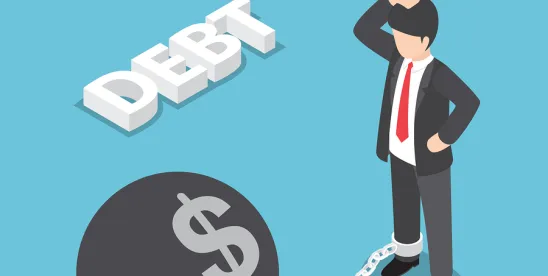HM Revenue & Customs (“HMRC”) has issued a consultation entitled “Tax Abuse and Insolvency: A Discussion Document” on how it proposes to confront those who misuse insolvency law as a means of avoiding or evading their tax liabilities.
HMRC often describes itself as an “involuntary creditor” because it does not choose to trade with debtors. Its debt arises automatically because the debtor trades with a third party over which HMRC has no control. Furthermore, the delay between a tax liability arising and when the debt is established by HMRC creates scope for a company to trade whilst insolvent after the tax liability has arisen but before it becomes enforceable. This provides the opportunity for a debtor to run up large tax liabilities before HMRC are able to take preventative action.
HMRC acknowledges that there are provisions under existing insolvency legislation enabling Insolvency Practitioners (IPs) to claw back assets from the directors/shareholders of insolvent companies. However, where litigation or the threat of litigation ends in a commercial settlement between the parties, HMRC believes that this may result in the directors/shareholders receiving a significant discount on their tax liability.
One method suggested of tackling such behaviour would be to widen HMRC’s existing powers enabling them to pursue directors for tax liabilities personally, so that:
- the company’s liability for tax debts is transferred to the persons responsible for the avoidance/evasion (presumably the directors and/or shareholders of the company) if there is a risk that there will be a shortfall to HMRC in the insolvency; and/or
- those directors/shareholders are made jointly and severally liable with the company to HMRC for the company’s tax liability.
HMRC recognises that any new powers need to have sufficient safeguards in place to protect the interest of other creditors and is at pains to point out that they are targeting only the “small minority” who abuse the system.
Litigation risk v reward
As mentioned above, HMRC believes that respondents may obtain a significant discount on their tax liability when reaching commercial settlements with IPs. Moreover, any settlement amount is paid to creditors pro rata in the order prescribed by insolvency legislation. The proposals outlined above highlight that HMRC may wish to pursue the delinquent director/shareholders direct, rather than remaining largely passive in proceedings as an unsecured creditor.
In the consultation document, HMRC accepts that in reaching a commercial settlement with a director/shareholder, IPs must consider the expense of litigation, litigation risk, the information available to them (and/or HMRC) and their own appetite for litigation. They must also consider the proposed respondent’s ability to satisfy any judgment debt and the interests of creditors as a whole. However, save for the requirement to consider other creditors’ interests, these are all considerations that any potential litigant would have.
It is clear that there could be an overlap between the claims that could be brought by HMRC pursuant to the proposed extended powers and claims which could be brought by IPs where a company has traded at the expense of the crown. Therefore, where an IP reaches a commercial settlement with a director, one could assume that HMRC might have reached a similar settlement. The key difference is that if the IP reaches settlement, the funds are paid to the IP for distribution to the general body of creditors rather than direct to HMRC alone. The concern is that HMRC could seek to beat IPs to the punch and look to recover monies that would otherwise be payable to the IP, for distribution to all creditors, thereby depriving the general body of creditors of these monies.
The abolition of HMRC’s status as a preferential creditor was one of the key changes made to the insolvency regime by the Enterprise Act 2002. The change (together with the introduction of the prescribed part) was designed to promote a rescue culture and ensure that unsecured creditors (often SME’s or sole traders) get a better deal upon insolvency. It might be thought that HMRC’s proposed changes are an attempt to regain its preferential status through the back door.
Another key aim of the rescue culture was to preserve viable commercial enterprises, encourage entrepreneurship and ultimately enhance economic growth through responsible risk-taking. The robust approach now being proposed by HMRC could result in the stifling of a ‘rescue culture’ with people less willing to take reasonable risks in business (given the potential for personal liability to HMRC that could result) and ordinary unsecured trade creditors being worse off if HMRC pursues delinquent directors for its own benefit.
Conclusion
HMRC’s active involvement to prevent exploitation of insolvency procedures as a method of avoiding/evading tax is something that should be welcomed. However, it remains to be seen whether the actions HMRC proposes to take are appropriate.
HMRC’s discussion document is silent as to how its litigation against those at fault is to be funded. Many IPs engage solicitors on a conditional basis, seek litigation funding or sell their claims to parties who may have more of an appetite for the risk of litigation. All of this minimises creditor (and IP) exposure to the inherent risks of litigation, thus avoiding the stifling of genuine claims.
One option (which would not require any legislative changes) may be for HMRC to become more actively involved in assisting IPs in utilising their current powers and/or funding litigation where appropriate. This would ensure that HMRC is engaged in the IPs’ decision making processes, but also preserve the rights of other unsecured creditors who stand to lose out if HMRC was to run a competing claim for its own benefit.
If HMRC wishes to take the lead in such claims, another option might be to allow it to do so but on condition that any recovery it makes (net of costs) is then handed over to the IP to distribute to creditors (of which HMRC will be just one) according to the statutory order of priority.
Finally, in light of HMRC’s concern regarding the delay between a tax liability arising and becoming enforceable as a debt, an alternative solution could be to legislate for more frequent reporting to (and therefore monitoring by) HMRC. This would create less opportunity for companies to trade at the crown’s expense and enable HMRC to take more immediate action where required. Given the current movement towards online accounting software this may be a realistic prospect in the short to medium term.
We shall await the outcome of the consultation with interest.
Ollie Ward-Jones also contributed to this post.




 />i
/>i
